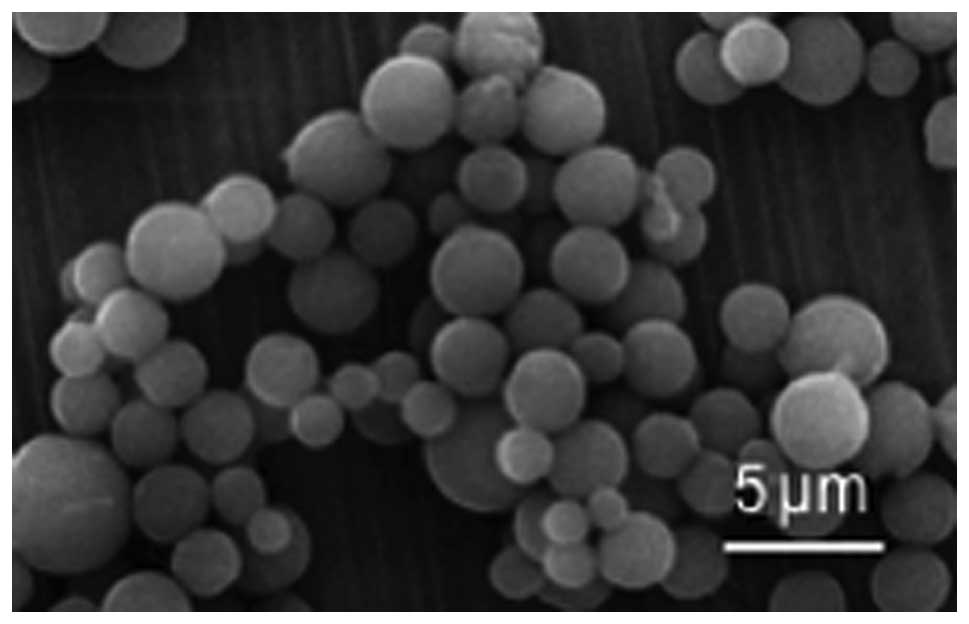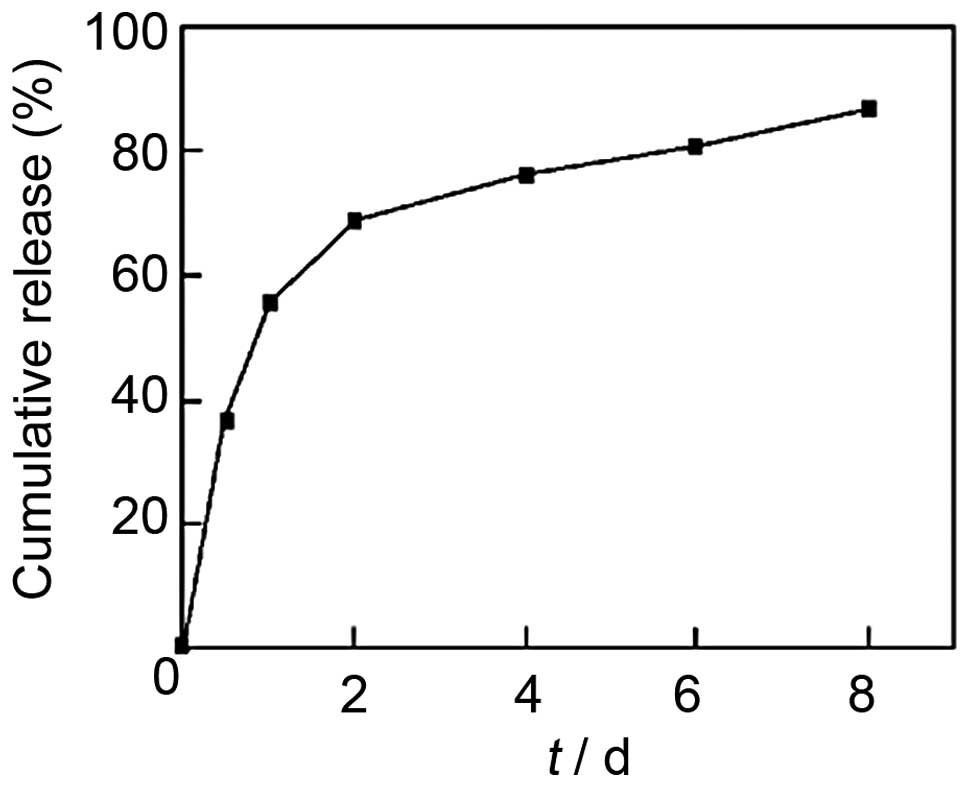Effect of erythropoietin loading chitosan‑tripolyphosphate nanoparticles on an IgA nephropathy rat model
- Authors:
- Published online on: March 28, 2014 https://doi.org/10.3892/etm.2014.1643
- Pages: 1659-1662
Metrics:
Total
Views: 0 (Spandidos Publications: | PMC Statistics:
)
Total PDF Downloads: 0 (Spandidos Publications: | PMC Statistics:
)
Abstract
The aim of the present study was to investigate the effect of erythropoietin (EPO) loading chitosan‑tripolyphosphate (CS‑TPP) nanoparticles on an immunoglobulin A nephropathy (IgAN) rat model. CS‑TPP nanoparticles were produced from CS and TPP and EPO was loaded by mixing with the nanoparticles. The IgAN rat models were randomly divided into three groups: the CS‑TPP‑EPO group, CS‑TPP group and EPO group. Hemoglobin (Hb), blood urea nitrogen (BUN) and creatinine (Cr) levels were measured in each group using a Biochemical Analyzer (Hitachi, Tokyo, Japan). The average size of nanoparticles was 485±12 nm and the encapsulation efficiency of EPO was 78.45%. The EPO release curve in CS‑TPP‑EPO nanoparticles exhibited a biphasic distribution in vitro. The levels of BUN and Cr in the CS‑TPP‑EPO group were significantly lower compared with the control group (P<0.05); however, the level of Hb in the CS‑TPP‑EPO group was higher compared with the other groups (P<0.05). The changes in Hb, BUN and Cr in the CS‑TPP‑EPO group were maintained for less than one week following the end of the treatment with CS‑TPP‑EPO nanoparticles. In conclusion, the CS‑TPP‑EPO nanoparticles had a lower toxicity compared with EPO and CS‑TPP treatment. Furthermore, CS‑TPP‑EPO may improve the therapeutic effect in the IgAN model. This suggests that CS‑TPP‑EPO nanoparticles may be a potential therapeutic drug for the treatment of patients with IgAN.












